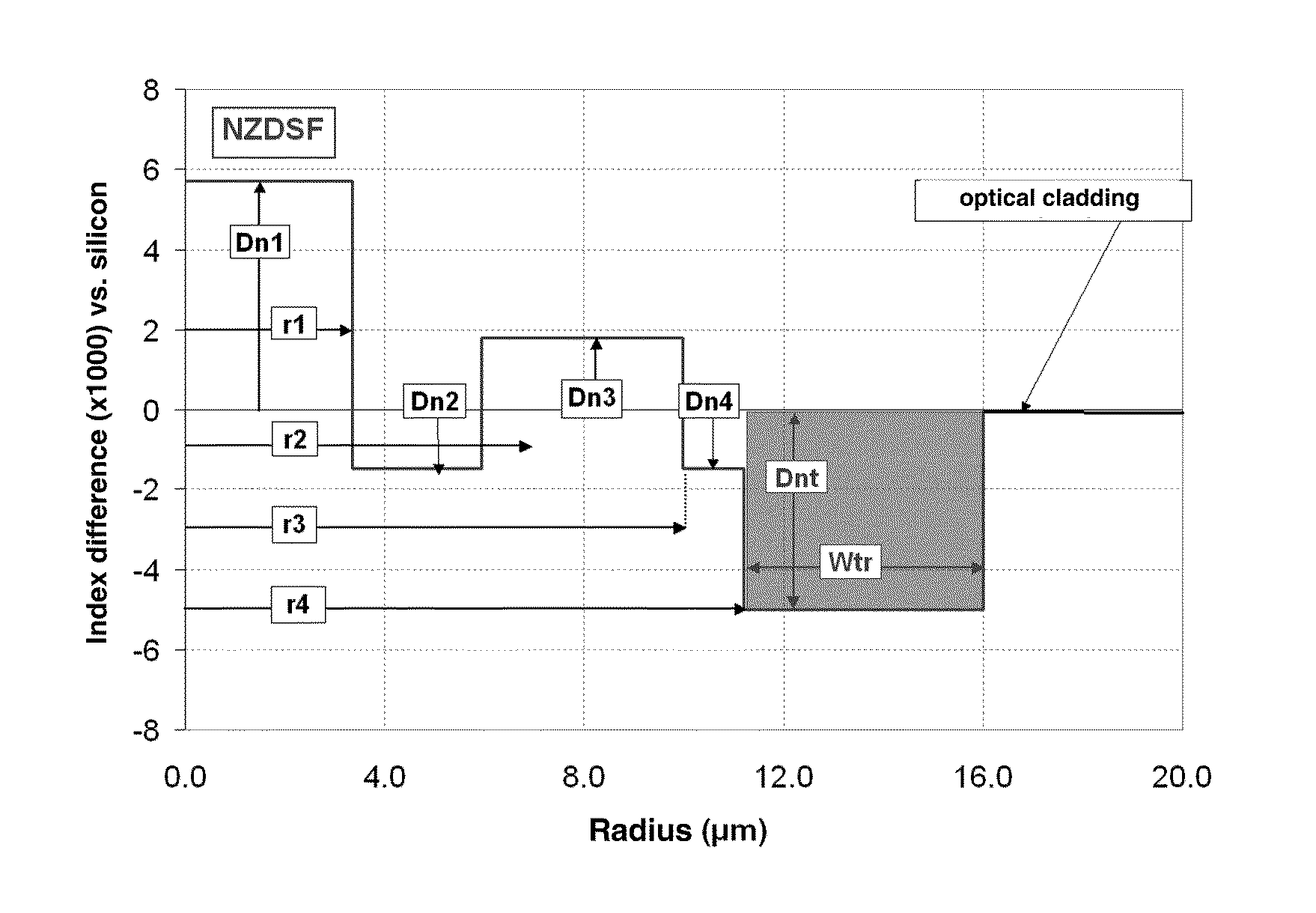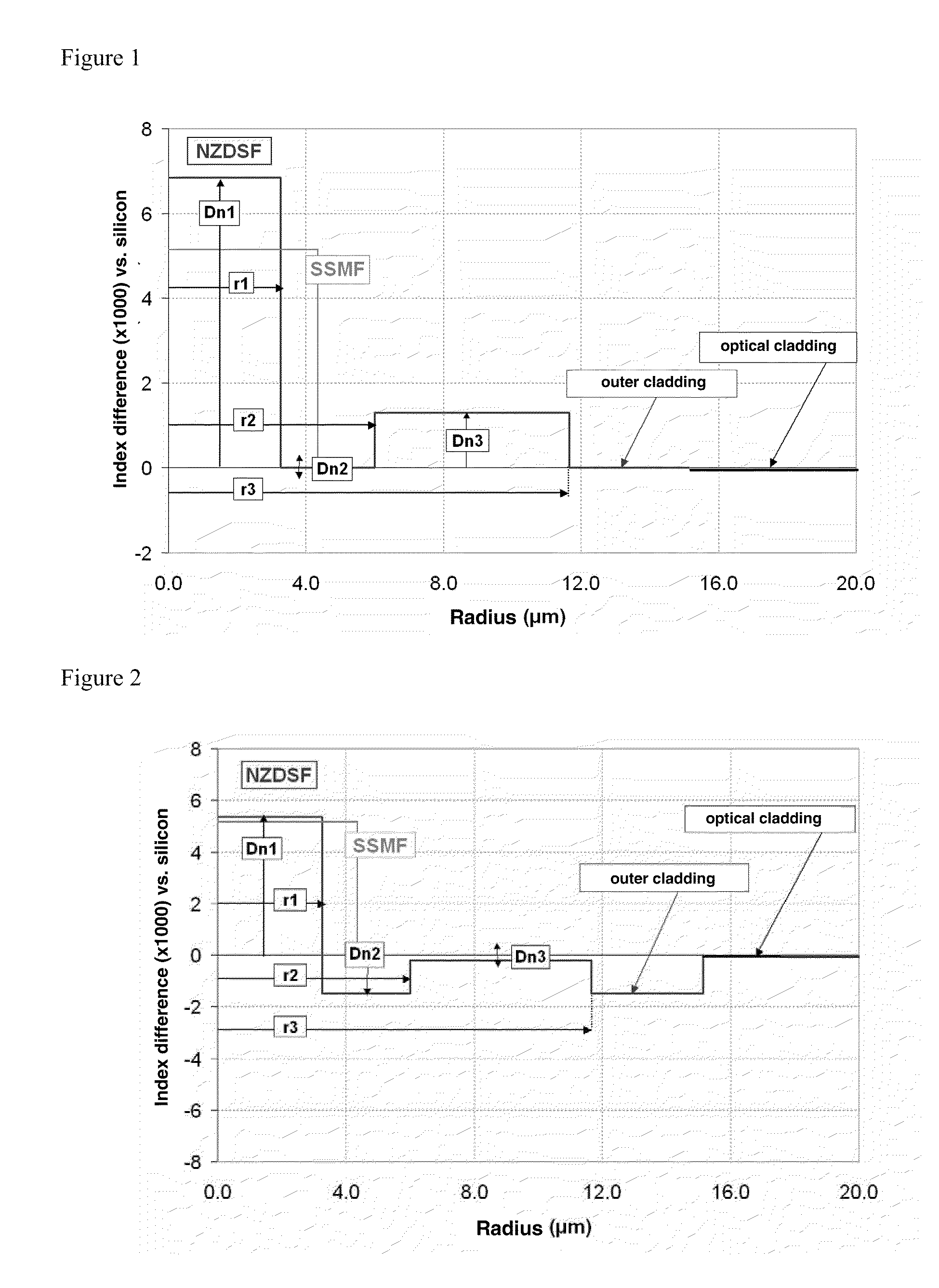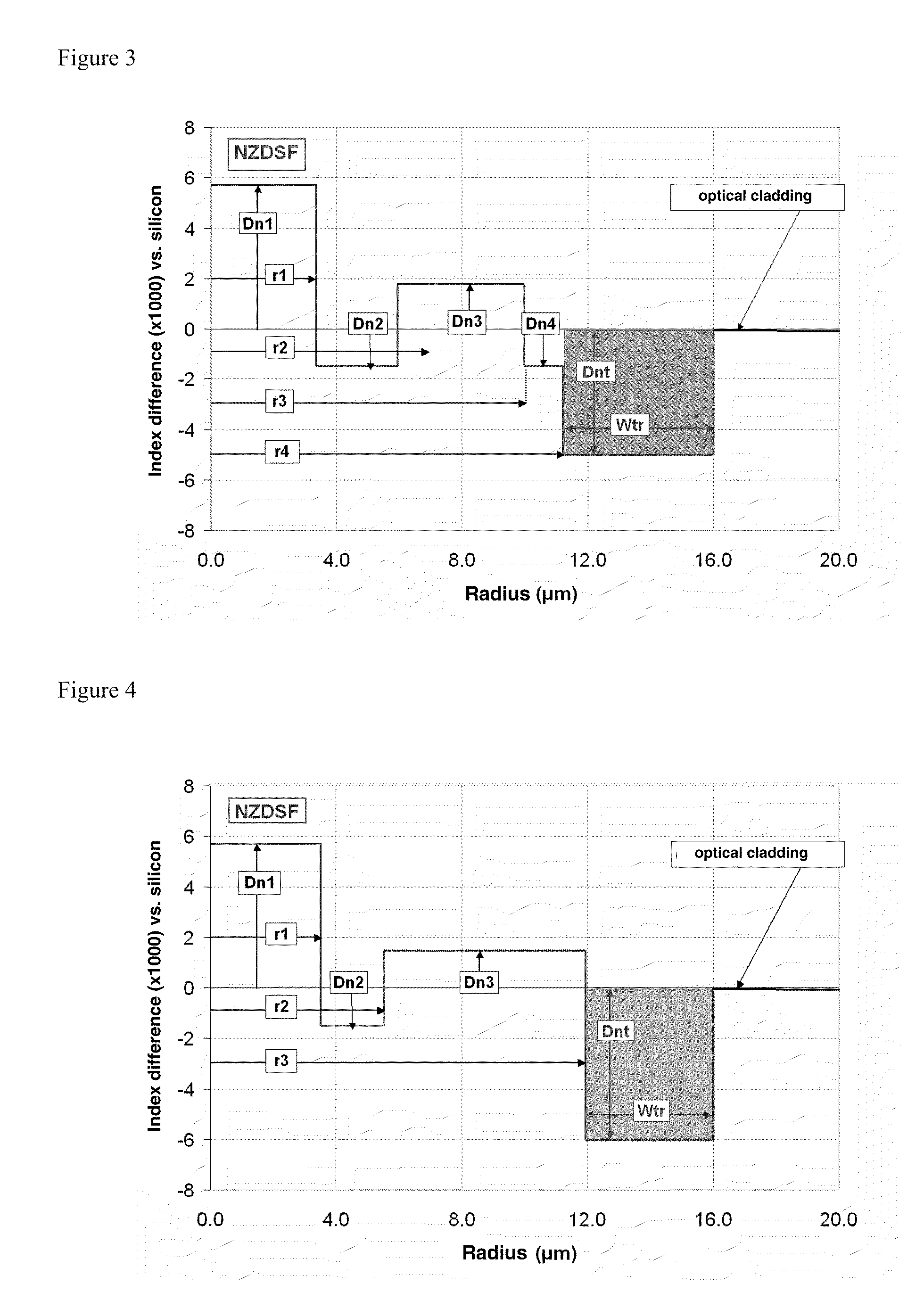Dispersion-shifted optical fiber
a technology of optical fiber and shifted fiber, applied in the field of optical fiber transmission, can solve the problems of introducing more significant rayleigh scattering loss, attenuation larger, attenuation in optical fiber, etc., and achieve the effect of limiting bending loss
- Summary
- Abstract
- Description
- Claims
- Application Information
AI Technical Summary
Benefits of technology
Problems solved by technology
Method used
Image
Examples
Embodiment Construction
[0043]The fiber according to the invention is a non-zero dispersion-shifted fiber that has a chromatic dispersion lower than the chromatic dispersion of a standard step-index SSMF. The fiber according to the invention has reduced Rayleigh scattering losses (e.g., less than 0.164 dB / km at 1550 nm). The fiber according to the invention further has limited bending losses (e.g., less than 0.5 dB / turn for a bending radius of 16 millimeters at 1550 nm and less than 0.5 dB / 100 turns for a bending radius of 30 millimeters at 1625 nm.
[0044]The fiber of the invention will be described with reference to FIGS. 3 and 4, which illustrate set profiles for two possible embodiments.
[0045]The NZDSF according to the invention includes a central core having an index difference Dn1 with an outer cladding, acting as an optical cladding, and at least three inner cladding zones between the central core and the optical cladding. In this context, the central core and the inner cladding zones are obtained by ...
PUM
 Login to View More
Login to View More Abstract
Description
Claims
Application Information
 Login to View More
Login to View More - R&D
- Intellectual Property
- Life Sciences
- Materials
- Tech Scout
- Unparalleled Data Quality
- Higher Quality Content
- 60% Fewer Hallucinations
Browse by: Latest US Patents, China's latest patents, Technical Efficacy Thesaurus, Application Domain, Technology Topic, Popular Technical Reports.
© 2025 PatSnap. All rights reserved.Legal|Privacy policy|Modern Slavery Act Transparency Statement|Sitemap|About US| Contact US: help@patsnap.com



